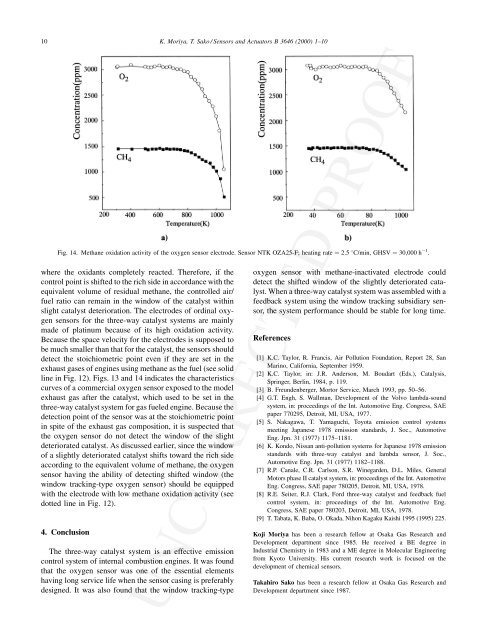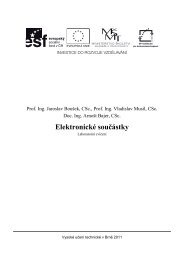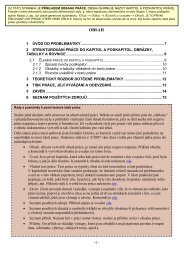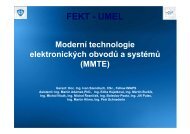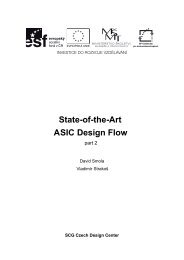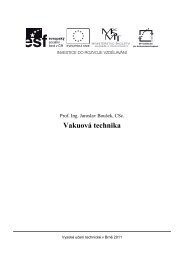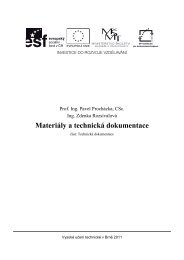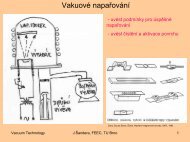Oxygen sensor monitoring a deterioration of a three-way ... - UMEL
Oxygen sensor monitoring a deterioration of a three-way ... - UMEL
Oxygen sensor monitoring a deterioration of a three-way ... - UMEL
Create successful ePaper yourself
Turn your PDF publications into a flip-book with our unique Google optimized e-Paper software.
10 K. Moriya, T. Sako / Sensors and Actuators B 3646 (2000) 1–10<br />
Fig. 14. Methane oxidation activity <strong>of</strong> the oxygen <strong>sensor</strong> electrode. Sensor NTK OZA25-F; heating rate ¼ 2:5 8C/min, GHSV ¼ 30;000 h 1 .<br />
where the oxidants completely reacted. Therefore, if the<br />
control point is shifted to the rich side in accordance with the<br />
equivalent volume <strong>of</strong> residual methane, the controlled air/<br />
fuel ratio can remain in the window <strong>of</strong> the catalyst within<br />
slight catalyst <strong>deterioration</strong>. The electrodes <strong>of</strong> ordinal oxygen<br />
<strong>sensor</strong>s for the <strong>three</strong>-<strong>way</strong> catalyst systems are mainly<br />
made <strong>of</strong> platinum because <strong>of</strong> its high oxidation activity.<br />
Because the space velocity for the electrodes is supposed to<br />
be much smaller than that for the catalyst, the <strong>sensor</strong>s should<br />
detect the stoichiometric point even if they are set in the<br />
exhaust gases <strong>of</strong> engines using methane as the fuel (see solid<br />
line in Fig. 12). Figs. 13 and 14 indicates the characteristics<br />
curves <strong>of</strong> a commercial oxygen <strong>sensor</strong> exposed to the model<br />
exhaust gas after the catalyst, which used to be set in the<br />
<strong>three</strong>-<strong>way</strong> catalyst system for gas fueled engine. Because the<br />
detection point <strong>of</strong> the <strong>sensor</strong> was at the stoichiometric point<br />
in spite <strong>of</strong> the exhaust gas composition, it is suspected that<br />
the oxygen <strong>sensor</strong> do not detect the window <strong>of</strong> the slight<br />
deteriorated catalyst. As discussed earlier, since the window<br />
<strong>of</strong> a slightly deteriorated catalyst shifts toward the rich side<br />
according to the equivalent volume <strong>of</strong> methane, the oxygen<br />
<strong>sensor</strong> having the ability <strong>of</strong> detecting shifted window (the<br />
window tracking-type oxygen <strong>sensor</strong>) should be equipped<br />
with the electrode with low methane oxidation activity (see<br />
dotted line in Fig. 12).<br />
4. Conclusion<br />
The <strong>three</strong>-<strong>way</strong> catalyst system is an effective emission<br />
control system <strong>of</strong> internal combustion engines. It was found<br />
that the oxygen <strong>sensor</strong> was one <strong>of</strong> the essential elements<br />
having long service life when the <strong>sensor</strong> casing is preferably<br />
designed. It was also found that the window tracking-type<br />
oxygen <strong>sensor</strong> with methane-inactivated electrode could<br />
detect the shifted window <strong>of</strong> the slightly deteriorated catalyst.<br />
When a <strong>three</strong>-<strong>way</strong> catalyst system was assembled with a<br />
feedback system using the window tracking subsidiary <strong>sensor</strong>,<br />
the system performance should be stable for long time.<br />
References<br />
[1] K.C. Taylor, R. Francis, Air Pollution Foundation, Report 28, San<br />
Marino, California, September 1959.<br />
[2] K.C. Taylor, in: J.R. Anderson, M. Boudart (Eds.), Catalysis,<br />
Springer, Berlin, 1984, p. 119.<br />
[3] B. Freundenberger, Mortor Service, March 1993, pp. 50–56.<br />
[4] G.T. Engh, S. Wallman, Development <strong>of</strong> the Volvo lambda-sound<br />
system, in: proceedings <strong>of</strong> the Int. Automotive Eng. Congress, SAE<br />
paper 770295, Detroit, MI, USA, 1977.<br />
[5] S. Nakagawa, T. Yamaguchi, Toyota emission control systems<br />
meeting Japanese 1978 emission standards, J. Soc., Automotive<br />
Eng. Jpn. 31 (1977) 1175–1181.<br />
[6] K. Kondo, Nissan anti-pollution systems for Japanese 1978 emission<br />
standards with <strong>three</strong>-<strong>way</strong> catalyst and lambda <strong>sensor</strong>, J. Soc.,<br />
Automotive Eng. Jpn. 31 (1977) 1182–1188.<br />
[7] R.P. Canale, C.R. Carlson, S.R. Winegarden, D.L. Miles, General<br />
Motors phase II catalyst system, in: proceedings <strong>of</strong> the Int. Automotive<br />
Eng. Congress, SAE paper 780205, Detroit, MI, USA, 1978.<br />
[8] R.E. Seiter, R.J. Clark, Ford <strong>three</strong>-<strong>way</strong> catalyst and feedback fuel<br />
control system, in: proceedings <strong>of</strong> the Int. Automotive Eng.<br />
Congress, SAE paper 780203, Detroit, MI, USA, 1978.<br />
[9] T. Tabata, K. Baba, O. Okada, Nihon Kagaku Kaishi 1995 (1995) 225.<br />
Koji Moriya has been a research fellow at Osaka Gas Research and<br />
Development department since 1985. He received a BE degree in<br />
Industrial Chemistry in 1983 and a ME degree in Molecular Engineering<br />
from Kyoto University. His current research work is focused on the<br />
development <strong>of</strong> chemical <strong>sensor</strong>s.<br />
Takahiro Sako has been a research fellow at Osaka Gas Research and<br />
Development department since 1987.<br />
UNCORRECTED PROOF


